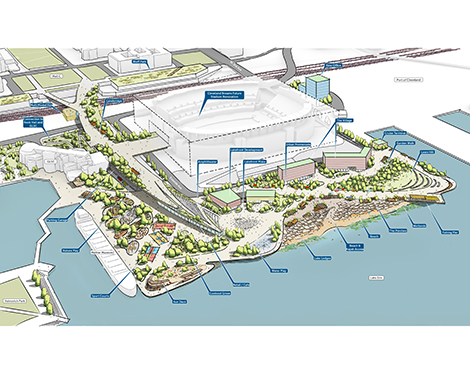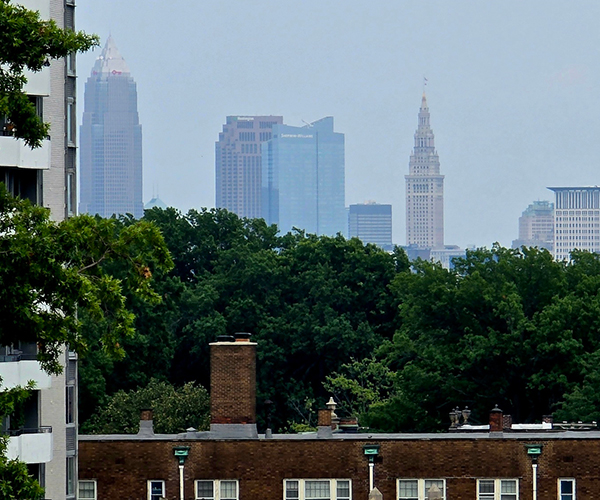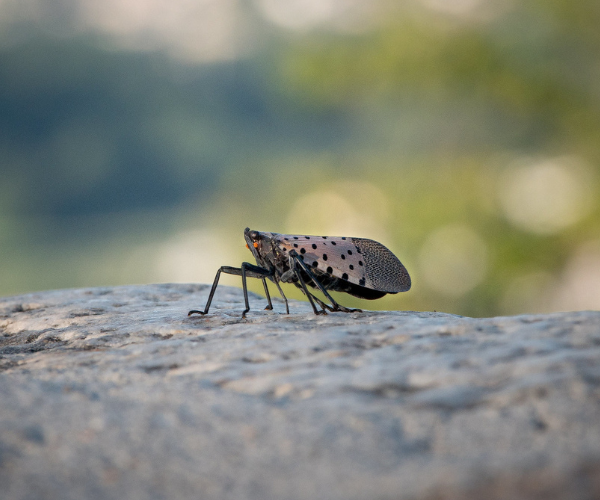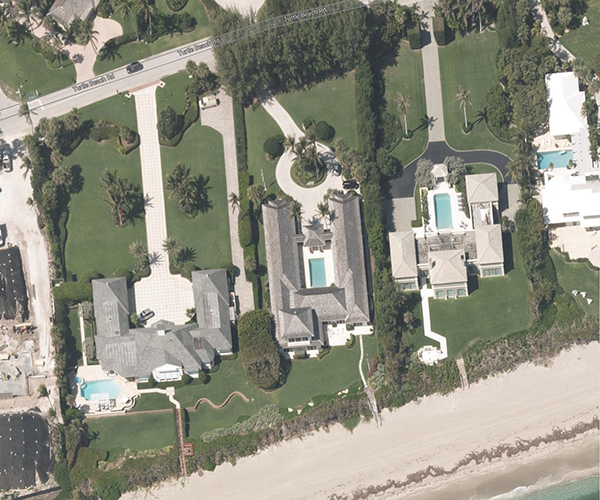We’ve heard it before — many, many times before — and we’re hearing it again: Cleveland’s lakefront needs a development plan.
City leaders have been working to push forward a unified vision, one that focuses its efforts on a land bridge and transforming the spaces surrounding Cleveland Browns Stadium into lush, multi-use park spaces.
At a Thursday community meeting at the Great Lakes Science Center, project leaders and city officials discussed their vision for the North Coast Master Plan. Early renderings portrayed themed porches, kids playing areas, event spaces and pedestrian walkways.
Project and city leaders did not mention how much the project could cost or a time frame at Thursday’s presentation and panel discussion.
“We intentionally are showing sketches, because that is a reflection on where we are in the process,” said James Corner Field Operations architect Lisa Switkin. “We’re genuinely asking for feedback, and it is genuinely making the work better. I think there’s a real commitment to that process, too. I think that goes back to creating that larger feeling that people can feel like together, this is a reflection on the values and vision for Cleveland.”
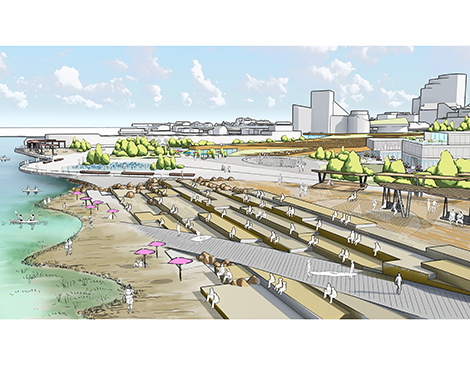
Values
Organizers have involved the public in a few ways developing their plan, including surveys and workshops. A video presentation showcased Clevelanders highlighting what they hope the park will include. They mentioned greenspaces, benches, picnic tables, live music events, water activities, a clean lake, family-friendly atmosphere and a sense of unity for East and West Siders.
The Master Plan referred to its planned park as “a place of healing” during Thursday’s session several times — a grounded way to address Cleveland’s existing inequities. Developers lauded its accessibility and potential offerings to every kind of Clevelander.
“For a long time, our city has been known as one of the most segregated cities in America,” Cleveland mayor Justin Bibb said. “The lake, and the river, has really been our dividing line between the East Side and West Side, Black and white. We as a city finally got this project right.”
The Arc
The sketches showcased an arc-shaped land bridge connecting a waterfront, wetland beach directly to Downtown, allowing pedestrians to step over the train lines and roadways that currently block easy access between the two zones.
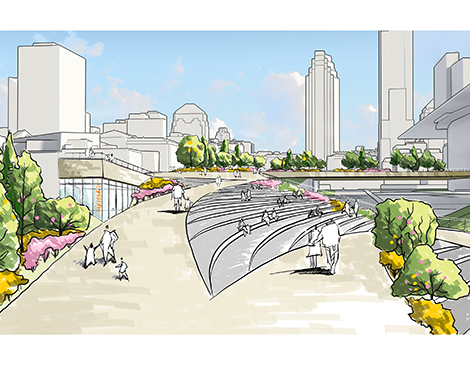
While stepping over the bridge, Switkin says people can expect an ever-changing view of the lake, all while getting closer to attractions like the Great Lakes Science Center and the soon-to-expand Rock & Roll Hall of Fame — and the waters beyond. Plus, kayak launches.
“We felt it actually had to land and touch down at the lake,” Switkin said.
It’s not all that unlike past land bridge ideas; Switkin pointed out the past Burnham plan as providing inspiration for the newer sleek design. The latest design would split into two entryways at Malls B and C in front of the Huntington Convention Center.
The Design
The North Coast Master Plan crams a lot of elements into this new park on Lake Erie. The base of the land bridge ends with an amphitheater gathering area, near a “water play” and children’s playground area alongside the Steamship William G. Mather Museum. Sport courts, a sundeck and a “cookout grove” could round out the corner.
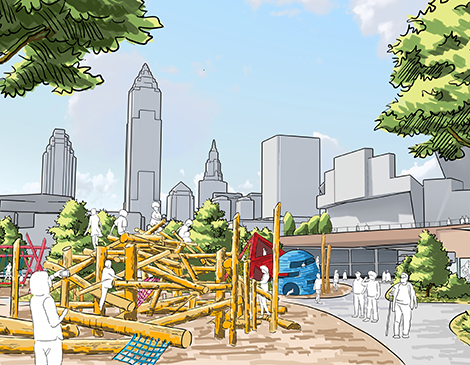
A main beach area would take up much of the lakefront, with porches lining the edge of the space. Restaurant and retail spaces will be housed in a village section, near a fishing pier. A lawn hill and garden walk could also take shape.
Space under the land bridge isn’t wasted; it would host a multi-modal hub for trains, along with a parking garage closer to the stadium and GLSC.
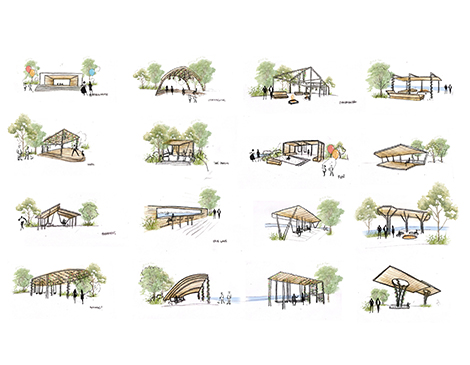
Browns Stadium
For a plan that’s so centered around the Cleveland Browns Stadium — it nearly surrounds it — the team, its owners Dee and Jimmy Haslam, and their proposed renovations received few mentions at the meeting.
The Haslams’ plans for the stadium remain in development, as they continue discussions with the city. This week, Jimmy hinted that he and Dee could possibly be considering land in Cleveland’s suburbs to build a new Browns stadium.
"The only thing Dee and I would say for sure is we're not leaving Northeastern Ohio," Jimmy said in a training camp media session. "That's for sure."
"We want to continue having conversations about how we remodel the stadium and stay vibrant on the lakefront," Dee said at the session. "We think it's really critical for the community. The lakefront is an important process. Outside of us, the lakefront in Cleveland has to be developed. The connection bridge needs to happen regardless of what happens to our stadium."
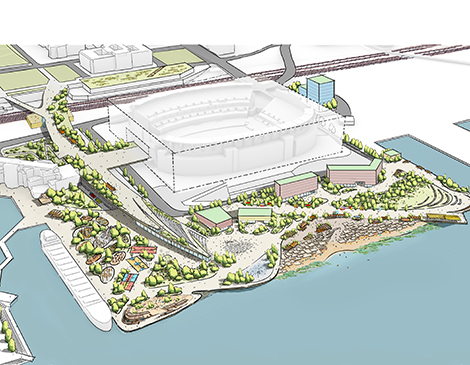
The Master Plan connects directly to the stadium, which was depicted in Thursday’s presentation renderings as a simple, undetailed cube.
“You’ll notice there are also connections to the new stadium renovation, which is striving to create a really welcoming year-round destination, as well as Voinovich Park and the new Rock Hall expansions’ community park,” Switkin said, before moving on.
Feedback
The design was crafted with the Cleveland community at every step, according to Switkin.
However, the panel discussion left little room for community comment or questions, with time for just a handful of questions from the packed room of attendees.
Don Young of the Greater Cleveland Boating Association raised a concern about the design in relation to boating and the breakwater. Other commenters asked about the connections between the North Coast Master Plan and other lakefront development projects, like work at the E. 55th St. Marina.
“The goal, long term, is to make sure all of this is interconnected,” Bibb said, “from the East side, to the core of Downtown, to the West side.”
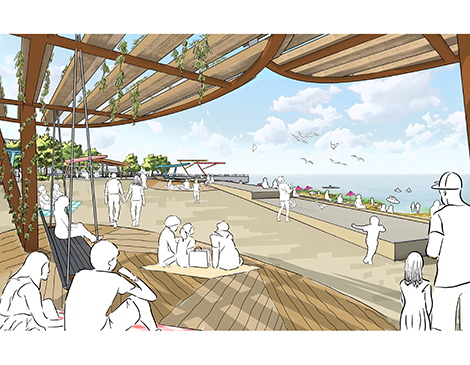
Forward Momentum
When asked why he feels optimistic about these plans, as opposed to past lakefront development plans, Bibb pointed out the plan’s support on multiple government levels, including city hall, Cuyahoga County and Downtown stakeholders like surrounding museums and the football stadium. “This is an administration priority,” Bibb said.
He also spoke a bit about the pandemic.
“Every major American city in the country is trying to figure out what’s going to make their urban core, their downtown unique,” Bibb said. “The fact that we’re not a one-waterfront city not just with the lakefront but with the riverfront, too — that’s our unique value proposition coming out of the pandemic, and we can really reimagine our downtown with this new ‘shore to core to shore’ strategy. To me, that’s our sweet spot.”
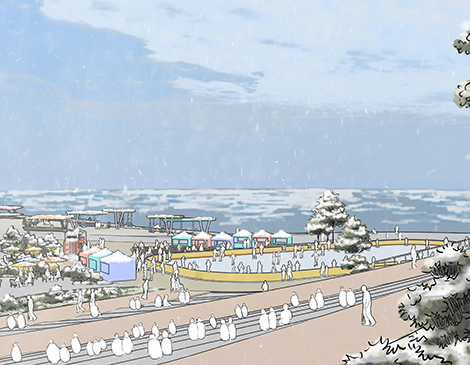
For more updates about Cleveland, sign up for our Cleveland Magazine Daily newsletter, delivered to your inbox six times a week.

